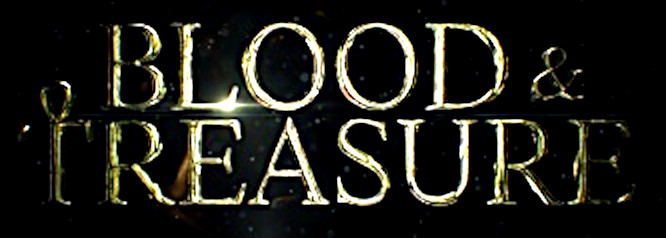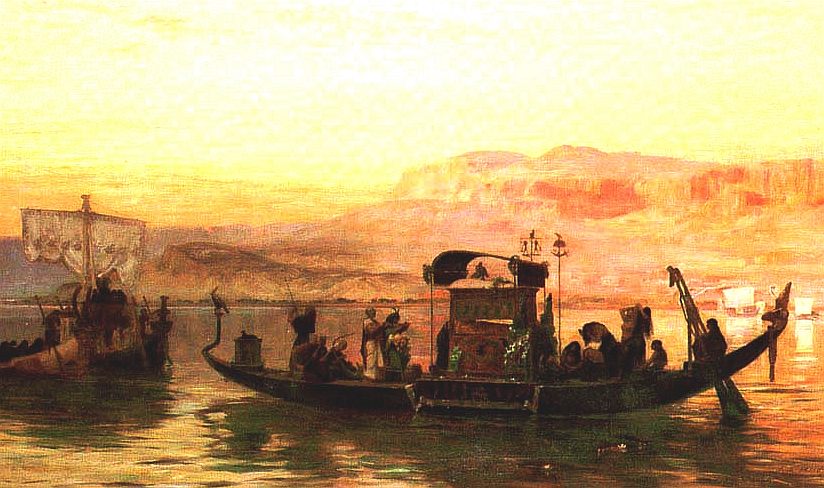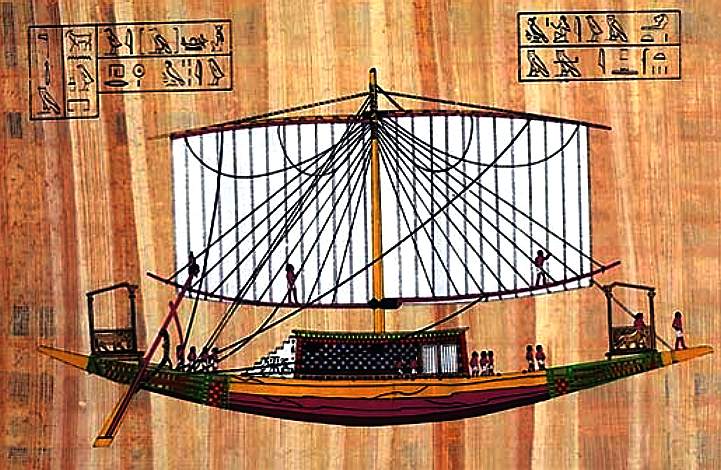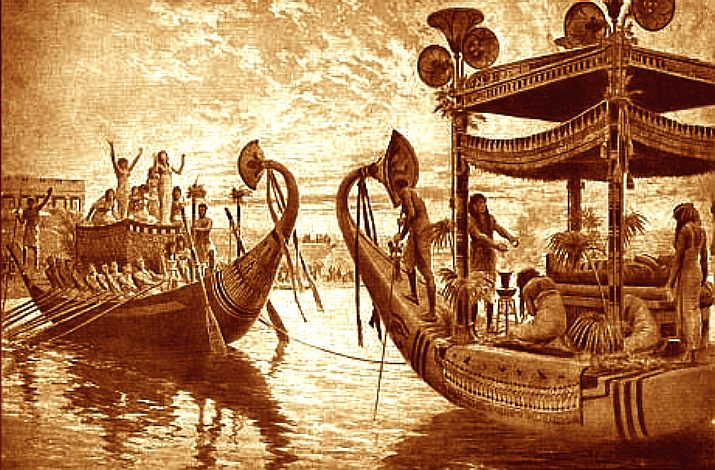|

Blood
and Treasure is a network TV series by CBS
Antonio Cupo plays Captain Bruno Fabi, an officer in the Carabinieri TPC, and secretly a member of the Brotherhood of Serapis. He dies after being shot while helping Danny
McNamara and Lexi Vaziri. Season 1 only.
CARABINIERE
TPC
The Carabinieri Command for the Protection of Cultural Heritage, better known as the Carabinieri T.P.C., is the branch of the Italian Carabinieri responsible for
combating art and antiquities crimes, is viewed as an experienced and efficient task force.
The force has four sections: archaeology, antique dealing, fakes, and contemporary art. It is led by a colonel and headquartered in Rome, with twelve regional offices. It functions in coordination with the Ministero per i Beni e le Attività Culturali.
Il Nucleo Tutela Patrimonio Artistico was founded by General Arnaldo Ferrara on 3 May 1969. It was the first specialist police force in the world in this sector, predating the
UNESCO Convention on the Means of Prohibiting and Preventing the Illicit Import, Export and Transfer of Ownership of Cultural Property of 1970. On 5 March 1992 the force was renamed Comando Carabinieri per la Tutela del Patrimonio Culturale.
The force maintains a database of stolen works. As of 1 March 2011, some 5,290 missing items were listed as having particular economic or cultural value. It also publishes a Bulletin of Trafficked Art Works, 2010 seeing the 32nd annual issue.
In 2009, some 39,584 looted antiquities and 19,043 other works were recovered, valued at €165 million. In 2008, works valued at €183 million were recovered. Improved international collaboration, site security, and databases saw a drop of 14.5% in stolen Italian works between the two years, while the number of illegal archaeological excavations discovered fell from 238 in 2008 to 58 in 2009.
In 2009 137 items relating to the Medici case were returned from Switzerland, recovered from the Zurich-based restorers Fritz Burki & Son, who had worked on the Euphronios Krater. These items included statues, pottery, and a first-century AD fresco. A further 300 items were still being sought in cooperation with Swiss authorities.
In 2010 a statue of Zeus was recovered that had been stolen from the Museo Nazionale Romano in 1980. The force has also been active in Iraq, surveying sites at risk, providing training, developing systems, and helping to recover 2,971 objects illicitly trafficked since 1990. In 2010, in cooperation with the Swiss authorities, it managed to recover 337 artifacts of cultural heritage from Geneva, Switzerland and following exhibited the works in the
Coliseum in Rome.
ISIS
TERRORISM FUNDING VIA ANTIQUITIES SALES
UNESCO has warned that ISIS is looting and selling ancient artifacts on the black market to finance their terrorist activities, the AFP reported. These latest findings contribute to growing evidence that ISIS continues to raise money by selling stolen antiquities (see “Is ISIS Bankrolling Terrorist Activities With Stolen Antiquities?“).
Experts gather at UNESCO’s Paris headquarters to discuss the effects on cultural heritage caused by the crisis in Iraq. UNESCO chief Irina Bokova condemned what she called the “cultural cleansing” of Iraq and revealed that
UNESCO had alerted museums, Interpol, and the World Customs Organization to be vigilant “over objects that could come from the current looting of Iraqi heritage.”
According to Baghdad Museum director Qais Rashid, “Assyrian tablets were stolen and suddenly found in European cities.” He added that “the Mosul Museum, the second most important in Iraq, suffered an attack from Daesh [an alternative name for ISIS] and they also attacked the staff from the museum.”
Describing another incident Rashid said “Daesh gathered over 1,500 manuscripts from convents and other holy places and burnt all of them in the middle of the city square.”
The extremists have also destroyed shrines and churches throughout the country (see “ISIS Destroying Iraq’s Cultural Heritage One Site at a Time“), including the Nabi Yunus shrine in Mosul, the tomb of the Prophet Jonah which was revered by Muslims as well as Christians (see “ISIS Militants Demolish Jonah’s Tomb in Iraq“). “There were explosions that destroyed buildings dating back to the Assyrian era,” Rashid lamented.
In the United Kingdom, there have been renewed calls to ratify the 1954 Hague Convention on the Protection of Cultural Property in the event of Armed Conflict,[10] which strives to protect all forms of cultural property during wartime. The United Kingdom is far behind much of the world on this measure, as the only major nation not to have signed the convention in the over 60 years since its creation.[11] However, calls have been made for the ratification of the Convention since the escalation of violence in Syria beginning in 2013,[12] with no substantive movement taken to achieve this step. In 2014, the United Kingdom did enact some trade restrictions on Syrian antiquities coming into the country.[13] In December of 2013, the European Union also applied restrictions to Syrian cultural property entering the European Union.[14] Finally, in February of 2014, the United Nations Security Council adopted Resolution 2199 that condemns the destruction of cultural heritage and adopts legally binding measures to counter illicit trafficking of antiquities and cultural objects from Syria and Iraq.[15]
The United States appears to lag the farthest behind of any of the major countries. A proposed bill has been in Congress since July, which would directly address cultural property entering the country. In June, the House passed the Protect and Preserve International Cultural Property Act, which would prevent objects stolen or looted since the beginning of the conflict in Syria from entering the United States borders.[16] However, this bill has only just left the Senate Committee on Foreign Relations as of January 28, 2016.
The most recent set of complete trade statistics shows that, in fact, the importation of Syrian antiquities into the United States has remained similar to the pre-2012 sanctions.[3] This is a stark contrast from all other Syrian goods, which have sharply declined from $429.3 million worth of declared goods, to just $12.4 million in declared goods.[4] Yet, in 2014, the importation of “Antiquities over 100 years old,” “Worked Monumental Stone and Mosaic Cubes” and “Collector’s Pieces of Archaeological, Historical or Numismatic Objects” represented $6,633,903, or 54%, of all U.S. imports from Syria.
[1] Rajendra Abhyankar, Syrian “Blood Antiquities” Proliferate Urgent Need for an International Agreement, Huffington Post (Nov. 3, 2014, 12:18 PM), http://www.huffingtonpost.com/rajendra-abhyankar/syrian-blood-antiquities-_b_6095248.html.
[2] Ana Swanson, How the Islamic State makes its money, Wash. Post (Nov. 18, 2015), https://www.washingtonpost.com/news/wonk/wp/2015/11/18/how-isis-makes-its-money/
[3] Rick St. Hilaire, “Antiques” from Syria: U.S. Cultural Property Import Stats Raise Suspicion, Cultural Heritage Lawyer (Dec. 19, 2015), http://culturalheritagelawyer.blogspot.com/2015/12/antiques-from-syria-us-cultural.html.
[4] Id.
[5] Id.
[6] See Abhyankar, supra note 1.
[7] Justine Drennan, The Black-Market Battleground, Foreign Policy (Oct. 17, 2014), http://foreignpolicy.com/2014/10/17/the-black-market-battleground/ (quoting a German team of investigative reporters who believe that the link between ISIS and the sale of antiquities is tenuous at best).
[8] Steven Meyer and Nicholas Kulish, ‘Broken System; Allows ISIS to Profit from Looted Antiquities, N.Y.Times (Jan. 9 2016) http://www.nytimes.com/2016/01/10/world/europe/iraq-syria-antiquities-islamic-state.html some of the most famous sites in Syria show the telltale pockmarks of looters holes, including the site of Mari and Dura-Europas.)
[9] UNESCO Res. Convention on the Means of Prohibiting and Preventing the Illicit Import, Export and Transfer of Ownership of Cultural Property 1970 (Nov. 14, 1970), http://portal.unesco.org/en/ev.php-URL_ID=13039&URL_DO=DO_TOPIC&URL_SECTION=201.html
[10] UK’s New Emergency Heritage Management Project, Institute of Art and Law Blog (Nov. 18, 2015), http://www.ial.uk.com/news/tag/isis/
[11] UK to adopt Hague Convention to protect artefacts in war zones, BBC News (June 21, 2015), http://www.bbc.com/news/uk-33213911
[12] Id.
[13] Export Control (Syria Sanctions)(Amendment) 2014, SI 2013/2012 (Eng.), http://www.legislation.gov.uk/en/uksi/2014/1896/note/made.
[14] Council Decision 2013/760 O.J. (L 335), http://eur-lex.europa.eu/LexUriServ/LexUriServ.do?uri=OJ:L:2013:335:0050:0051:EN:PDF.
[15] S.C. Res. 2199 (Feb. 12 2015), http://www.un.org/ga/search/view_doc.asp?symbol=S/RES/2199%282015%29.
[16] H.R. 1493 114th Cong. (2015-2016), https://www.congress.gov/bill/114th-congress/house-bill/1493?q=%7B%22search%22%3A%5B%22Protect+and+Preserve+International+Cultural+Property+Act%22%5D%7D.
[17] Bill to Halt ISIS Antiquities advances to the Senate, U.S. Committee of the Blue Shield (Jan. 28, 2016), http://uscbs.org/news/.
MAIN CHARACTERS
Matt Barr as Danny McNamara
Sofia Pernas as Lexi Vaziri
James Callis as Simon Hardwick (né Karim Farouk)
Katia Winter as Gwen Karlsson
Michael James Shaw as Aiden Shaw (né Dwayne
Coleman)
Oded Fehr as Karim Farouk (né Rasheed Hegazi)
Alicia Coppola as Dr. Ana Castillo
Mark Gagliardi as Father Chuck
RECURRING CHARACTERS
John Larroquette as Jay Reece
Antonio Cupo as Captain Bruno Fabi (season 1)
Tony Nash as Omar
Ali Hassan as Taj bin Yusef
Anna Silk as Roarke
SEASON ONE 2019
1
The Curse of Cleopatra:
Part I
1
The Curse of Cleopatra: Part II
2 Code of the Hawaladar
3 The Secret of Macho Grande
4 The Brotherhood of Serapis
5 The Ghost Train of Sierra Perdida
6 Escape from Casablanca
7 The Lunchbox of Destiny
8 The Shadow of Projekt Athena
9 The Wages of Vengeance
10 Return of the Queen
11 Legacy of the Father
12 The Revenge of Farouk


Blood & Treasure is an action–adventure drama television series created by Matthew Federman and Stephen Scaia that premiered on May 21, 2019 on CBS.
The series centers on an antiquities expert and a cunning art thief who team up to catch a ruthless terrorist who funds his attacks through stolen treasure. As they crisscross the globe hunting their target, they unexpectedly find themselves in the center of a 2,000-year-old battle for the cradle of
civilization.
REFERENCE
https://
|






